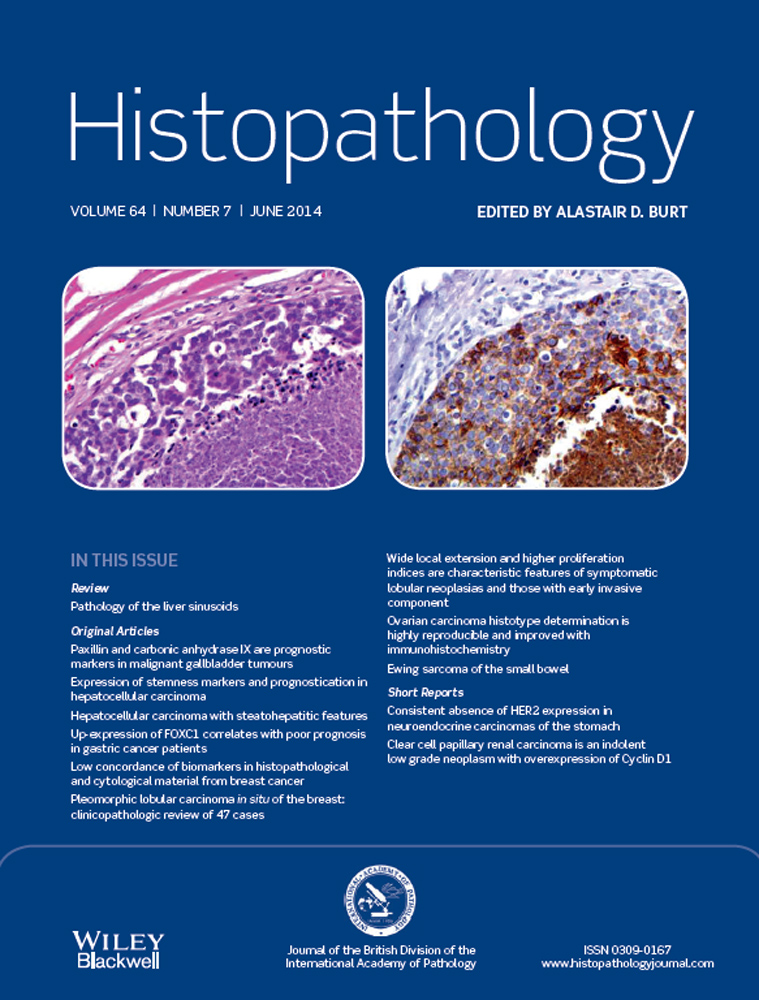Wide local extension and higher proliferation indices are characteristic features of symptomatic lobular neoplasias (LNs) and LNs with an early invasive component
Abstract
Aims
Lobular neoplasias (LNs) are typically small, clinically undetectable breast lesions, but some LNs are of clinical significance. The aim of this study was to clarify the histopathological characteristics of clinically overt (symptomatic) LNs and early invasive LNs.
Methods and results
Sixty-two surgically resected LNs, including eight with early invasion (≤10 mm), were classified into the following groups: (i) symptomatic and occult; and (ii) early invasive and non-invasive. Six histopathological factors, including the Ki67 labelling index (LI), were assessed and analysed by logistic regression models. On multivariate analysis, tumour size (P = 0.008), mitotic counts (P = 0.006) and Ki67 LI (P = 0.035) were risk factors for symptomatic features, and tumour size (P = 0.009) and Ki67 LI (P = 0.015) were risk factors for early invasive lesions. In the eight LNs with invasion, the symptomatic and occult subgroups showed differing nuclear atypia and structural patterns, but both lesions extended widely (22–96 mm).
Conclusions
Wide extension and higher proliferation activity were characteristic features of symptomatic LNs and LNs with early invasion.




